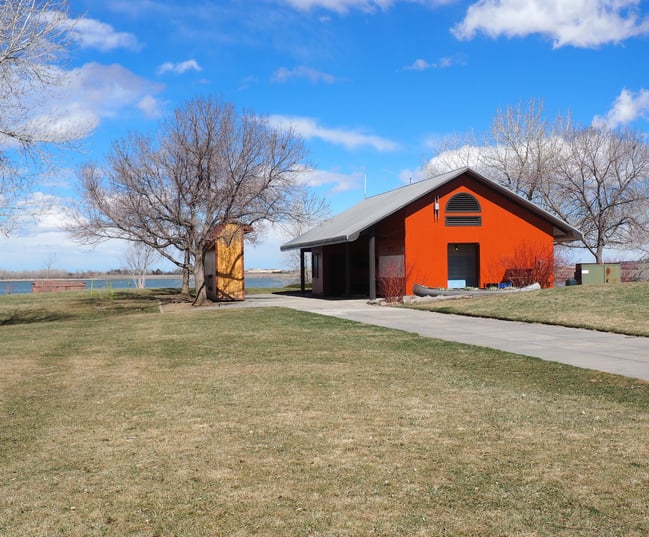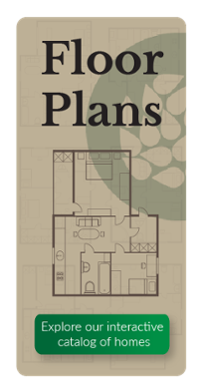
No matter where you look, almost every home has a utility structure on its property.
Sometimes it's a simple shed, while other times it's a free-standing garage that is as much a place to store vehicles as it is a spot to "step away."
For the homeowner looking to add a new, multifunctional building to their property, pole barns -- AKA post frame buildings -- is an option that delivers on many fronts.
Which fronts?
We've come up with seven reasons that are hard to ignore.
Why Pole Barns Are an Ideal Residential Utility Building
A utility building that meets a variety of purposes, residential pole barns are an investment in value:
- Versatility via customization
- Quickly built
- Easy additions
- Eco-friendly
- Ideal for phased projects
- Durable
- Long-lasting
1. Versatile Via Customization
One of the primary benefits of a pole barn as a residential utility building is its versatility via customization. As easily as other utility buildings, pole barns can be used for a wide range of purposes (which we'll discuss later). And with customization, such as adding windows, doors, or insulation, they can easily be designed to fit specific needs without requiring major work during the design and drafting phase to figure out feasible solutions.
2. Quickly Built
Compared to other traditional residential utility buildings, pole barns require less labor and materials, which results in quicker construction time. In fact, a pole barn can be erected in a matter of days or weeks (not months) making it an ideal choice for homeowners who need a quick and efficient solution.
3. Easy Additions
Think 10 years into the future.
While your pole barn has more than served its purpose, your needs for it have changed. More specifically, it needs more space.
Because of their design, pole barns are easily added onto. Putting on an addition won't require extensive engineering or design work to ensure the building remains structurally sound.
4. Eco-friendly
Made from sustainable materials such as wood and steel, pole barns have less of an environmental impact than other structures. In addition, as a prefabricated structure, they use fewer materials during construction and, by extension, generate less waste (a major cost-saver).
Additionally, pole barns can be designed to minimize energy consumption with components such as insulation or energy-efficient windows and lighting.
 5. Ideal for Phased Construction
5. Ideal for Phased Construction
To the beginning of our last point and needs changing…
Sometimes additional buildings aren't in the cards for the first phase of a project -- for instance, if you're building a custom home. Because of how easily they're designed, built, and their cost-effectiveness, it's not as major an undertaking or disruption to add a pole barn to your property when the time is better.
6. Durable
There's a distinct difference between a structure that's clad in, say, vinyl siding, than one in steel. The latter can "take a hit."
Pole barns are highly durable structures that can withstand harsh weather conditions and other environmental factors -- or even the occasional bump. They are made with sturdy materials such as pressure-treated wood and galvanized steel, which are resistant to rust, corrosion, and decay.
7. Long-lasting
This one's simple. Because of the way they're built and the materials used, a pole barn can serve as a functional utility building for several decades. What's more, it needs minimal maintenance during its useful life.
Ideal Applications for Residential Pole Barns
So how do pole barns fit into the residential property landscape? They're best suited for several uses:
- Garage or storage space: Among the most common uses, post frame buildings make the perfect garage or storage space. Residential pole barn garages can be customized to fit a variety of vehicles and equipment, including cars, boats, and even RVs. Additionally, pole barns provide a secure and weather-resistant environment to protect your belongings from the elements.
- Workshop or hobby space: Pole barns offer ample room for woodworking, metalworking, or other creative pursuits. With their open floor plans and high ceilings, pole barns provide a comfortable workspace that can be customized with electrical and plumbing systems to meet your specific needs.
- Livestock shelter or barn: For homeowners with livestock, pole barns are an excellent option for providing animals with a safe and comfortable place to live. These structures can be customized with stalls, feeding areas, and other features for animal care.
- Home office or studio: With more advanced customization and a foundation, pole barns can be used as a home office or studio, providing a quiet and private workspace separate from the main house.
A Different Take on "Residential" Pole BarnsIn the residential sector, pole barns have started to fill a much different role -- serving as literal homes. Like pole barns used as studios and home offices, with a higher level of design work and customization, post frame buildings can be turned into "Barndominiums" or "Shouses." For the homeowner who wants their house to tastefully double as a utility building, this type of structure can provide the perfect blend of form and function. Curious to learn more about residential pole barn home kits? Check out our article, "Pole Barn: Home Sweet Home." |
Pole Barns Vs. Metal Buildings and Stick-Built Buildings
But what about the other options: metal buildings and traditional stick-built structures?
While both are indeed options for residential utility buildings, they do have their drawbacks.
Let's take a look at both:
While metal barn kits and buildings (or steel barns) are often used for commercial and industrial purposes, they may not be the best choice for residential utility structures. One major drawback of metal buildings, such as metal garages, is their large, heavy spans, which require significant additional structural support. This extra support can take up valuable space within the building, making it less usable for residential purposes.
Additionally, metal buildings are typically used for industrial or commercial purposes, such as a large workshop or storage facility. Thus, they tend to have a more industrial appearance, which may not be desirable for homeowners who want a more attractive structure on their property.
Stick-built structures, on the other hand, have a different set of shortcomings.
Because they're essentially built from scratch on-site, they can be more expensive to construct than other types of buildings. Not only do they take more time to build, they also require more workers -- both major cost drivers. And unlike both post frame and metal buildings, stick-built structural components are not fabricated off-site with a high level of precision – stick-built buildings will always have scrap you’ll still pay for.
While customizing stick-built structures is easier than metal buildings, it still requires additional engineering to preserve the integrity of the building. And later on, the same goes for if you need to add to the building.
A Word on Foundations
If there's one thing both metal buildings and stick-built structures share in common, it's the need for a foundation.
Put simply, both metal buildings and stick-built utility structures require a foundation to provide a stable and secure base. This foundation can be made of concrete or other materials, and it must be constructed before the building itself can be erected.
Foundation installation is both time-consuming and expensive, as it involves excavation work, pouring concrete, and waiting for the foundation to cure before construction can proceed.
Though some pole barn owners do opt to build on a foundation, post frame structures do not require a foundation. Instead, they use vertical posts that are placed directly into the ground, which provides a stable and durable base for the structure.
Residential Pole Barns: An Easy Decision
For the homeowner looking for a residential utility building, there are plenty of options out there.
But when it comes to meeting multiple needs with an efficient and cost-effective solution, pole barns are in a league of their own.
Is a Pole Barn in Your Future?
Let's talk! Contact us today!


